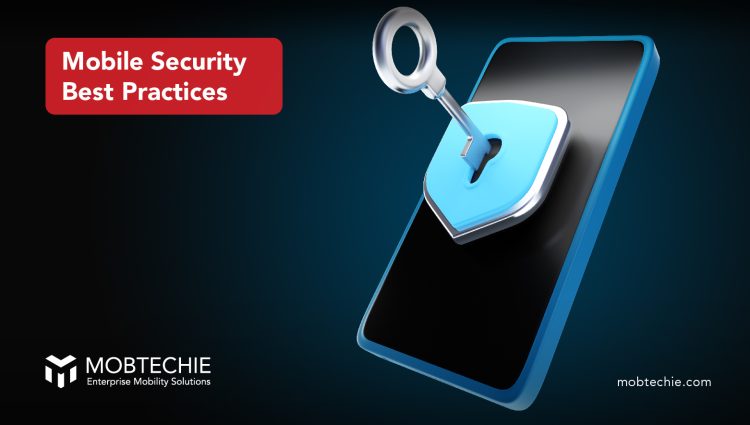Introduction
In the realm of mobile app development, ensuring robust security measures is paramount to safeguard user data and maintain trust. With the increasing prevalence of cyber threats, implementing effective authentication and authorization mechanisms has become indispensable for mobile applications. Whether you’re a mobile app development company in Kochi or anywhere globally, prioritizing security should be a top concern. Let’s delve into some best practices to fortify your mobile apps against unauthorized access and data breaches.
Understanding Authentication and Authorization
Before delving into the best practices, it’s crucial to differentiate between authentication and authorization. Authentication verifies the identity of users, ensuring they are who they claim to be. On the other hand, authorization determines the actions users are permitted to perform within the app, based on their authenticated identity.
Implementing Strong Authentication Mechanisms
The first line of defense against unauthorized access is implementing robust authentication mechanisms. Utilize multifactor authentication (MFA) to add an extra layer of security beyond traditional password-based authentication. MFA requires users to provide multiple forms of verification, such as passwords, biometrics, or one-time codes, significantly enhancing security.
Leveraging OAuth for Secure Authorization
OAuth has emerged as a standard protocol for authorization in mobile app development. It enables secure, delegated access to resources without disclosing user credentials. By integrating OAuth, mobile apps can request limited access tokens from the authorization server, ensuring that only authorized actions are performed on behalf of the user.
Securing Data Transmission with HTTPS
Ensure secure communication between the mobile app and the server by implementing HTTPS (Hypertext Transfer Protocol Secure). HTTPS encrypts data during transmission, thwarting eavesdropping and man-in-the-middle attacks. Additionally, enforce strict SSL/TLS configurations to mitigate vulnerabilities and ensure the integrity of data exchanges.
Implementing Role-Based Access Control (RBAC)
Role-based access control (RBAC) is instrumental in governing user permissions within the app. Define distinct roles and assign corresponding privileges based on user responsibilities. By adhering to the principle of least privilege, ensure that each user possesses only the necessary permissions to perform their tasks, minimizing the risk of unauthorized actions.
Employing Tokenization for Data Protection
Tokenization is an effective strategy for safeguarding sensitive data within mobile apps. Instead of storing sensitive information such as payment details or personal identifiers directly, tokenize the data by substituting it with unique tokens. This mitigates the risk of data exposure in the event of a breach, as tokens are meaningless to unauthorized parties without the corresponding decryption keys.
Conducting Regular Security Audits
Continuous monitoring and periodic security audits are essential to identify and remediate vulnerabilities in mobile apps. Engage in comprehensive testing, including penetration testing and code reviews, to uncover potential security loopholes. Address any discovered vulnerabilities promptly to fortify the app’s defenses against emerging threats.
Ensuring Secure Session Management
Effective session management is critical for maintaining the security of user sessions within the app. Implement session timeouts to automatically log out inactive users and prevent unauthorized access. Additionally, employ secure session tokens and regenerate them periodically to thwart session fixation attacks and session hijacking attempts.
Enforcing Strong Password Policies
Encourage users to adopt strong password practices by enforcing stringent password policies. Require passwords to meet complexity requirements, such as minimum length, inclusion of alphanumeric characters, and avoidance of common dictionary words. Additionally, educate users about the importance of password hygiene and the risks associated with password reuse.
Regular Updates and Patch Management
Stay vigilant against evolving security threats by promptly applying software updates and patches. Regularly update dependencies, libraries, and frameworks used in mobile app development to address known vulnerabilities. By staying abreast of security advisories and patching vulnerabilities in a timely manner, mitigate the risk of exploitation by malicious actors.
Conclusion
In conclusion, prioritizing authentication and authorization is imperative for securing mobile apps against a myriad of cyber threats. Whether you’re an app development company in Kochi or operating on a global scale, adopting these best practices can bolster the security posture of your mobile applications. By implementing robust authentication mechanisms, leveraging secure authorization protocols, and adhering to stringent security standards, you can instill confidence in users and safeguard their sensitive data from unauthorized access. Remember, in the realm of mobile app security, proactive measures are key to staying one step ahead of potential adversaries.
Mobtechie Labs
mobile app development company kochi app development company in kochi android app development company in kochi android app development company cochin






